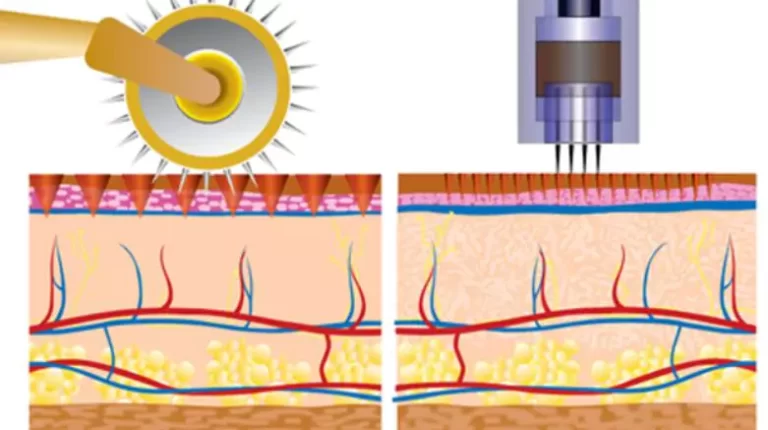Table of Contents
ToggleIntroduction to Derma Rollers
When discussing skincare, the derma roller has taken its place among the list of valuable tools and has acquired the status of a revolutionizer of skin collagen. These small devices with fine needles stuck to the hand come into contact with the skin’s surface, puncturing it to a minimal extent and stimulating minor healing processes in the human body. Information on the derma roller manufacturing process would help in determining their effectiveness and harm in the market.

History and Popularity of Derma Rollers
Derma rollers or Mimicroneedlingevices were invented dating back to ancient Acupuncture tools. The method of microneedling has evolved in more recent years in the early 21st century, it is favored due to its minimized invasiveness but with a lot of potential for impact. This has been fuelled by the increasing need for non-invasive beauty solutions as well as the emergence of new derma rollers.
Importance of Quality in Derma Rollers
As to the procedure itself, the effectiveness and safety of derma rollers widely depend on the quality of the product. Getting your derma rollers of high quality is very important to achieve the expected results in skin treatment in addition to observing the sterility of the needles which determines the sharpness of the needles and their ability to last for several sessions without blunting. Hence, knowledge about manufacturing has repercussions for both the buyer and seller.
Materials Used in the Derma Roller Manufacturing Process
Needle Material
It is crucial to note that the needles used in derma rollers range from fine to big, and are commonly made of stainless steel or titanium. Stainless is famous for fine and deluxe needle points while titanium is reputed to provide enhanced sturdiness and hardness. Both materials are non-irritating to the skin, and the appropriate ones are selected to reduce the risk of skin reactions.
Roller and Handle Material
What they don’t is that the roller and the handle are often made of medical-grade plastic or metal. These are selected to be sturdy, sufficiently light in weight, and easy to sterilize the surfaces at a later stage. amounts to medical-grade plastics because they want the device to remain light and easily navigable, whereas metal parts lend an air of prestige and sturdiness.
Step-by-Step Derma Roller Manufacturing Process
1. Design and Prototyping
The marked production process is the design and prototyping phase of the process. Applying relevant knowledge as well as design and manufacturing techniques, engineers and designers design every detail of the derma roller, including the distribution, length, and thickness of the needles. End products are then created, to confirm the functionality of the design as well as the ergonomic comfort of the product.
2. Material Selection and Sourcing
After the design is complete, it is then up to derma roller manufacturers to find materials of the highest quality to produce the product. This comprises the process of choosing the correct type of metal for the needles and the material of the roller and the handle. To achieve quality, that appears on the outside and inside of products, quality control measures are used to guarantee the standards of the material used are met.
3. Needle Production
Needle manufacturing is another important area of production throughout the entire production line. From carefully selected raw materials, they use some specially designed and developed machines to cut it into slender needles. Every individual needle passes through a quality control check right from the size to ensure all needles being used are equal in length and sharpness. As for the derma roller titanium needles that are produced, an additional process of coating is done to improve its durability and minimize the friction that it provides.
4. Needle Sterilization
Sanitization is a critical procedure to minimize the risks of bacterial growth to prevent skin injuries while using derma rollers. Syringes and needles go through a sterilization process under high heat pressure/ autoclave or gamma rays to get rid of microbes. This step is important in ensuring that the process of sterilizing the device does not contaminate it, and retain its cleanliness till it gets to the user.
5. Roller Assembly
The assembly phase is the process of attaching the needles to the roller. Care is taken at this stage to ensure that the spacing between needles is at a proper interval and that the needles are easily fixed. Sometimes the decision to accept or reject them is made behind automated machinery to ensure uniformity and efficiency.
6. Handle Manufacturing and Attachment
The handles are made as individual components, and mostly created via injection molding for plastic or through the machines for metals. Handles are added after the construction of the rollers whereby the addition is secured properly to enhance the grip. This step also involves integration features or hardness and grip-improving coatings if they are to be incorporated.
7. Quality Control and Testing
Quality control of derma rollers is exercised use during different stages of the derma roller manufacturing process as well. However, derma rollers undergo a final rigorous test at times before launching them in the market out of the manufacturing firm. These are things like ensuring that the needle is sharp, the roller’s functions, and how strong the rollers are. Apparatus that do not fall within the set standard are not approved on the market.
8. Packaging
When derma rollers reach the consumer, they go through a rigorous quality assurance process and are adequately sealed to ensure their cleanliness. This can be consisting protective casings and airtight seals sterilized before product applications. User instructions and cautionary information are also provided on usage instructions and safety guidelines in fliers.
9. Sterility Assurance and Sealing
The packaging that has been done at this stage undergoes a sterility assurance process. This is carried out by another dose of gamma radiation or ethylene oxide treatment to help maintain the sterility of the device until the user opens the packaging. The packaging is then sealed and has its label placed before being shipped off as a distribution package.

Technological Advancements in the Derma Roller Manufacturing Process
Automation and Precision Engineering
Technological advancement and reliability in the manufacturing of derma rollers have been enhanced through automation and precision technology. The utilization of automatic equipment allows for better placement of the needle as well as minimal variations from one product to another, thus eliminating the risk of defects resulting from mistakes made by machinists.
Biocompatible Coatings
Recent advancements in the class of surface coatings have improved the effectiveness and safety of derma rollers. Some examples of these materials include silicone and polymer because they can lower the friction between surfaces and likewise, the pain that is associated with microneedling. They also help to add another layer of protection around the device to make it last for a longer period.
Smart Quality Control Systems
The advancement of smart technology has greatly contributed to the change in the quality assurance phase through the use of smart quality control systems. Modern industrial robotic systems are equipped with precise sensors and complicated AI computations to check the variability in needle positioning and trueness to enhance the production of value-added products.
Environmental Considerations in Derma Roller Manufacturing Process
Sustainable Material Sourcing
This is a strategic move, as more voices are turning up in the fight against the destruction of the environment. So when making handles and packaging for the derma rollers, recycled or eco-friendly material can help in decreasing the impact.
Waste Reduction and Recycling
Waste management and recycling are important considerations during the derma roller manufacturing process, to reduce environmental consequences. Notably, the optimization of the consumption of raw materials and the recycling of manufacturing scraps also ensure that a sustainable form of production is used.
Energy-Efficient Production Processes
The maintenance of lower energy utilization in production processes helps not only to save money but also to decrease carbon emissions. The management has also employed the use of renewable energy sources, as well as enhanced the effectiveness of machinery, to conserve power.
Ensuring Safety and Compliance
Regulatory Standards
The use of derma rollers can only be prescribed and recommended once strict compliance with these regulatory guidelines has been met. These standards also differ by region but may help provide general guidance regarding the safety of the materials being used, their sterility, or other aspects of the product labeling. Adherence to these standards is a necessity for entering the legal market and gaining the public’s trust.
Consumer Safety Guidelines
Informing the consumer about possible dangers a product may cause and precautions they have to take if they want to use it is also part of manufacturing. These should include the right way of using derma rollers proper sterilization, washing, and ways of storage so as to avoid improper handling leading to skin damage.
Future Trends in the Derma Roller Manufacturing Process
Integration of Smart Technology
Indeed, the next strides in derma roller manufacturing will focus on smart technology solutions. With predefined intervals, it is possible to include digital usage counters, pressure sensors, and the possibility to connect skincare applications.
Customizable and Personalized Devices
Future developments in 3DP and material design may allow for necessary/application-specific and individual derma rollers. They could adjust them based on types of skin and treatment wants thereby increasing general efficiencies and satisfaction.
Eco-Friendly Innovations
It is therefore expected that there will be a continuous push towards the introduction of even better sustainable manufacturing practices. Sustainable raw materials, reducing waste or waste elimination, and biodegradable packaging should be expected to become normative shortly.

Conclusion
The derma roller manufacturing process is a relatively detail procedure that comprises several stages to achieve quality, safety, and effectiveness. Starting from the choice of the material, precise engineering, high standard quality assurance, and the introduction of new technologies to the design phase, every stage is equally relevant in developing a dependable skincare tool. Derma rollers remain among the most notable advancements in the field of dermal procedures, and new technologies and sustainable processes that are yet to be developed will only make these gadgets better than they are today. Getting to know this process also indicates the significance of making a wise decision in selecting good quality derma rollers since its making is the perfect synergy of science and art.



